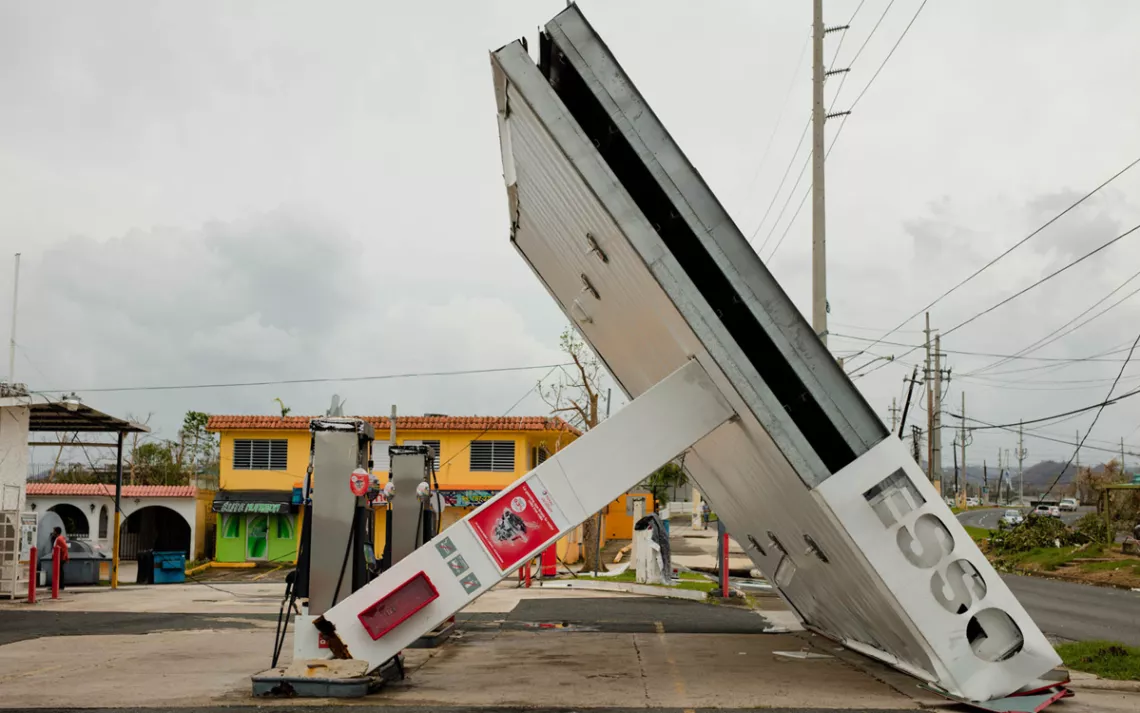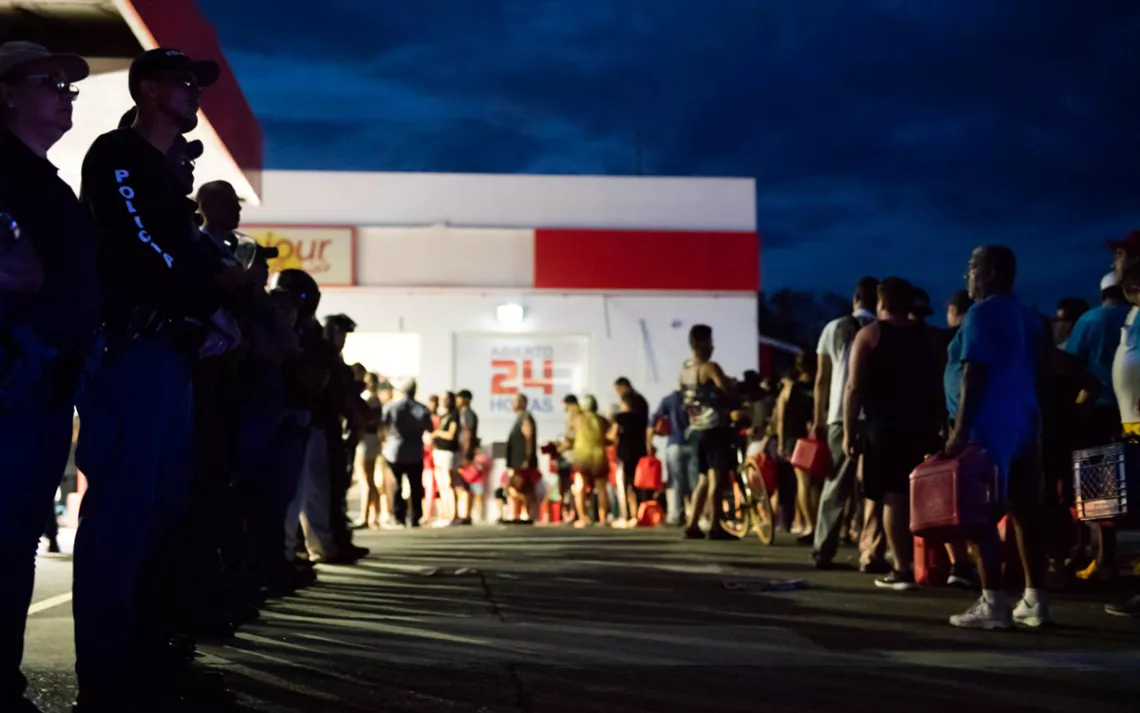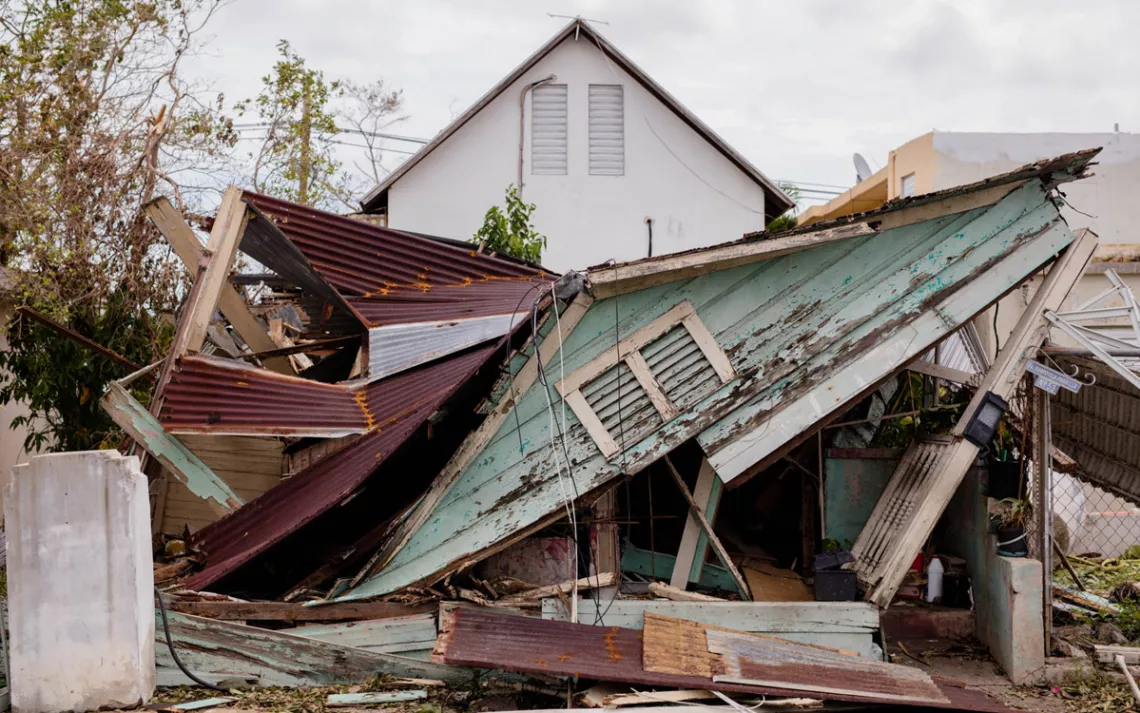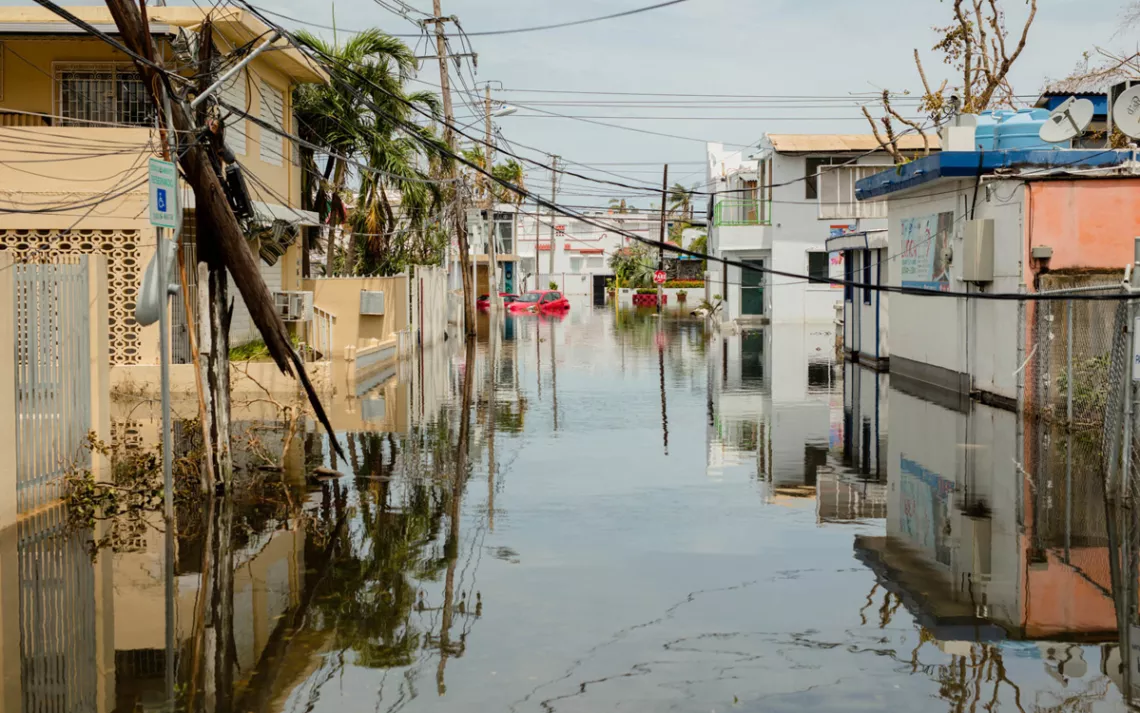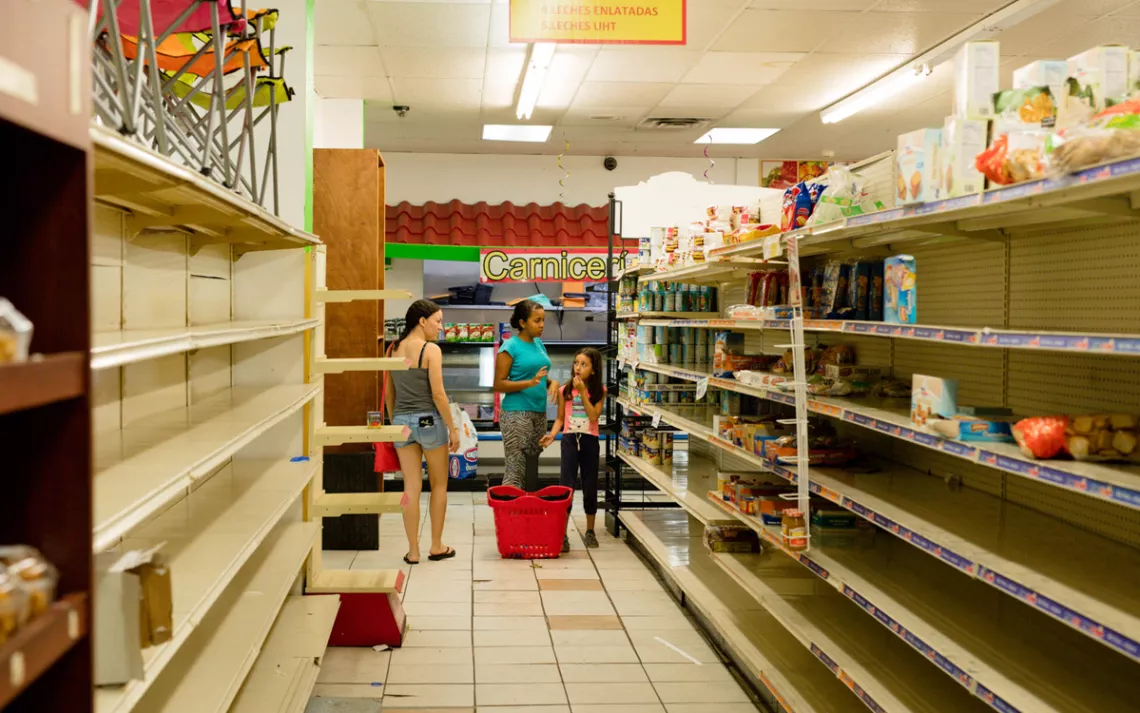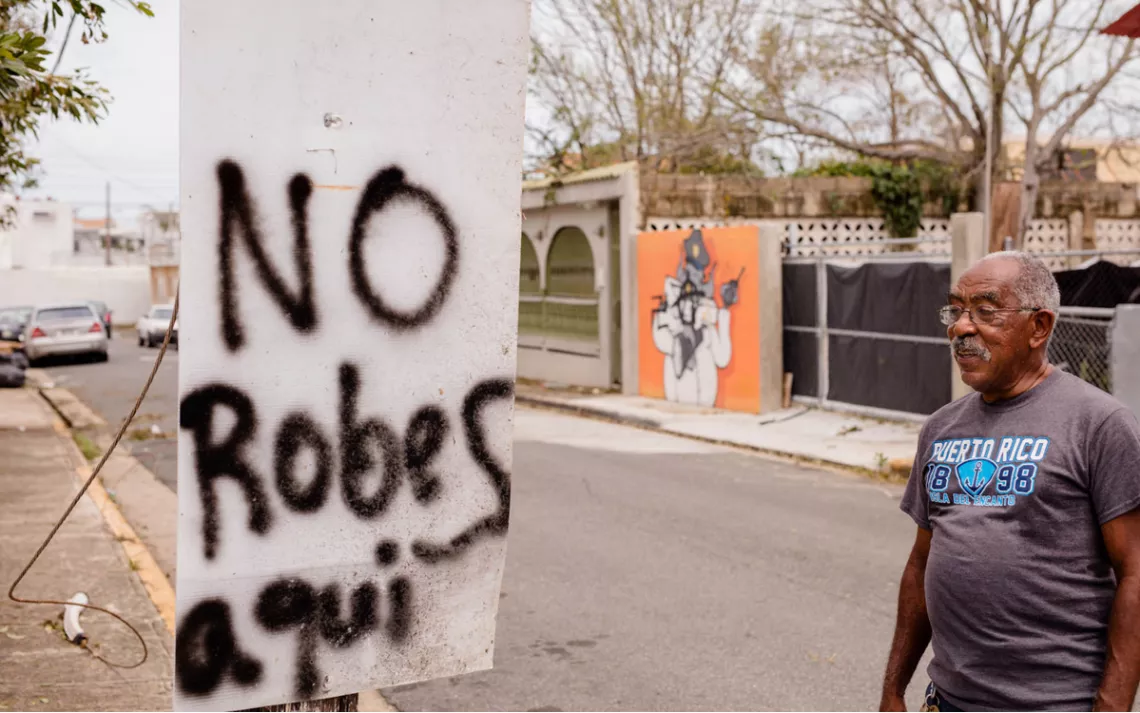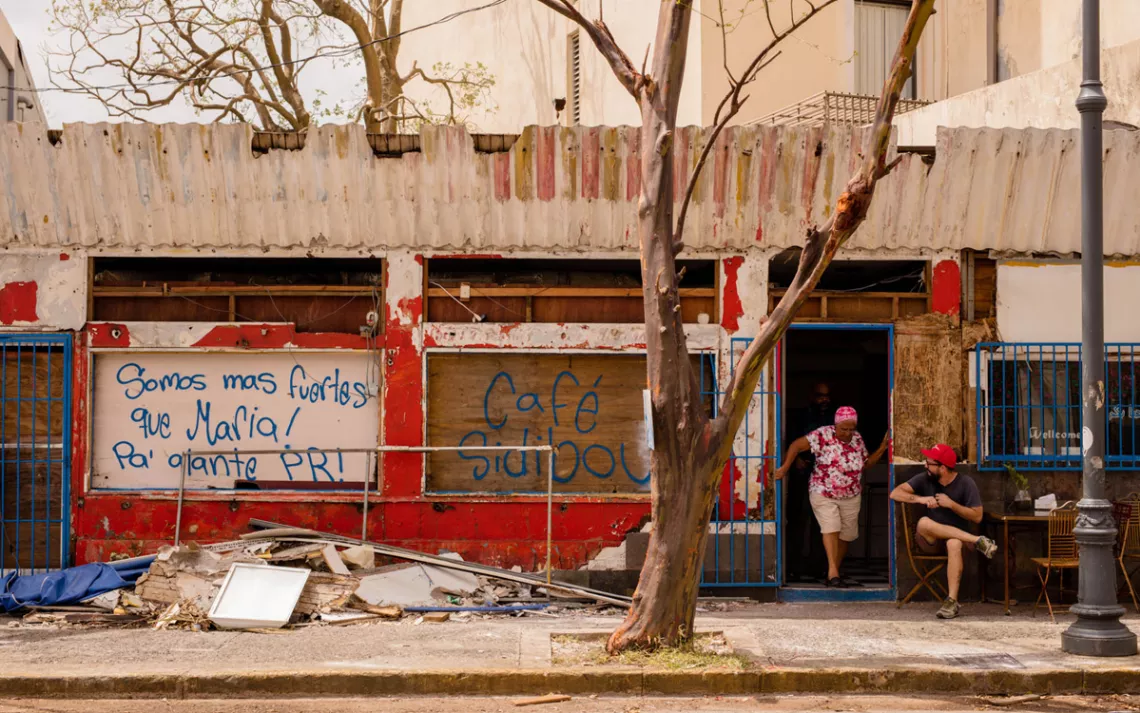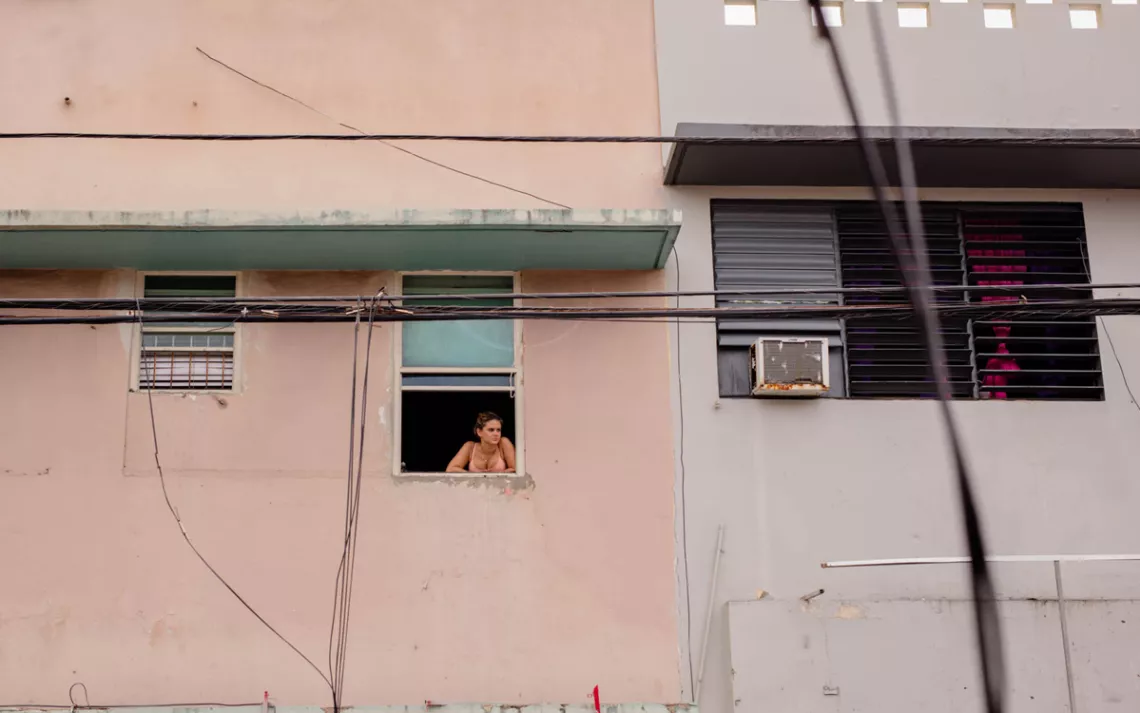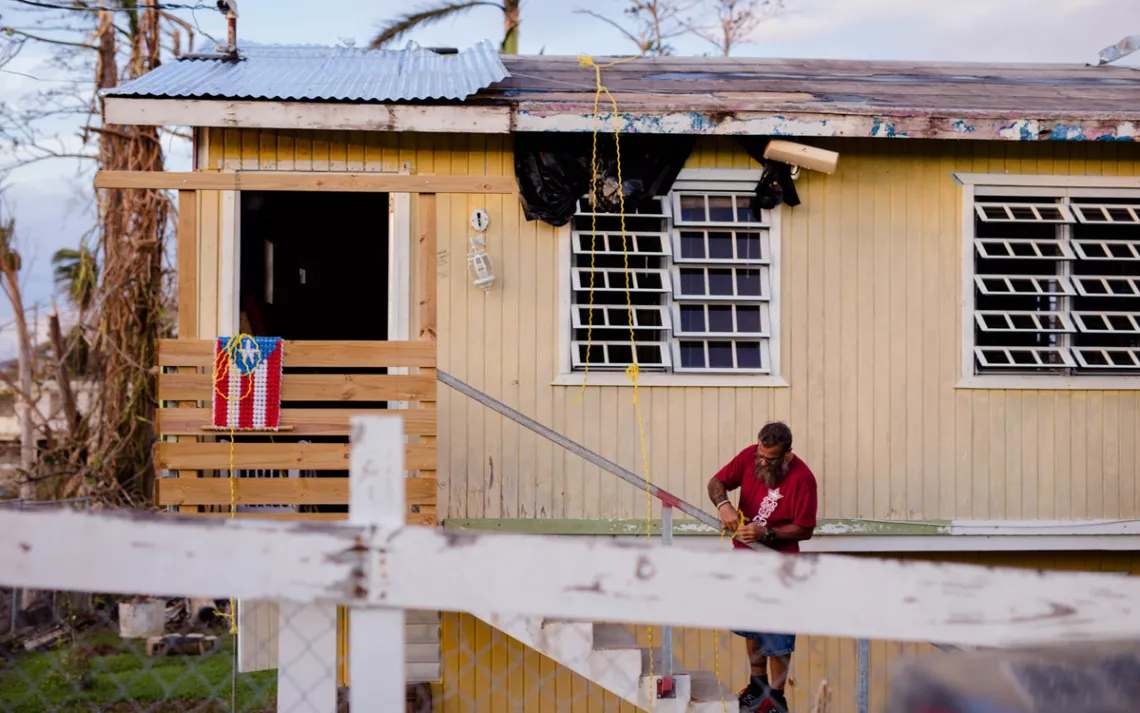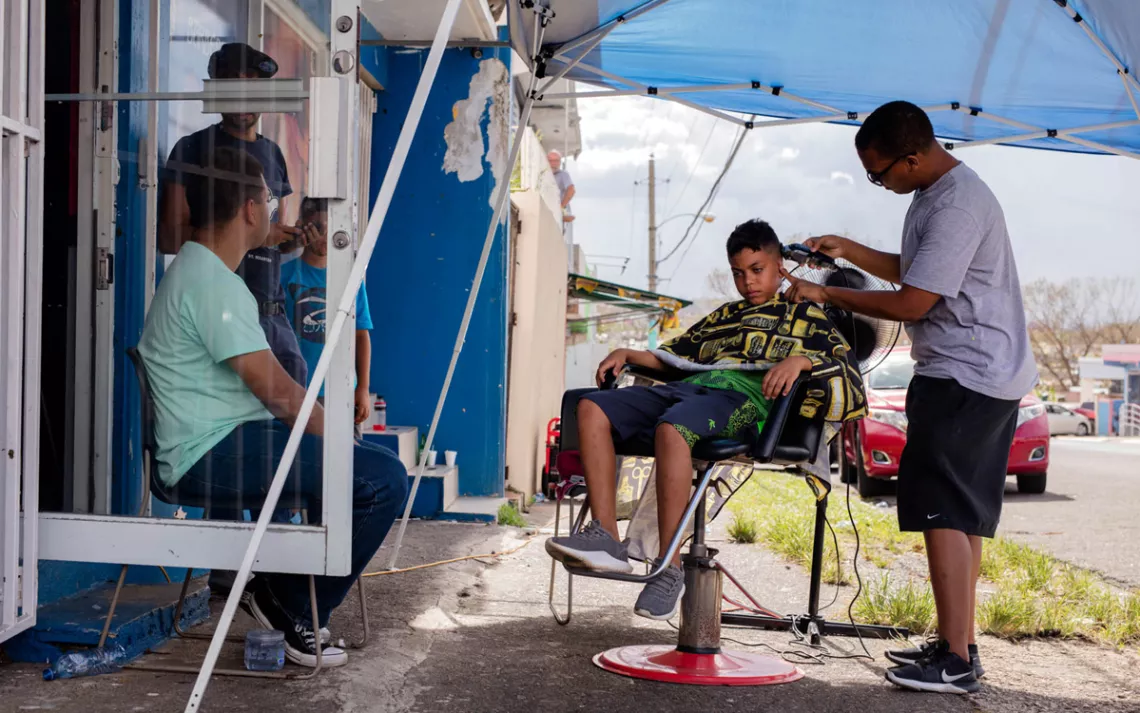Maria's Devastating Impact on Puerto Rico—A Slideshow
The worst hurricane to hit the island since 1928 leaves Puerto Ricans reeling
All photos by Steph Segarra
Little by little, things have been improving in post-Maria San Juan. The day after the hurricane, I went to see if my apartment and boyfriend’s house had survived. Coming out of Cupey and into Rio Piedras, I saw trees that were years old lying in the streets, houses exposed in their entirety, and roads full of branches and debris that the storm had brought there. The sky was gloomy; the rain hadn’t ceased. On our way to Bayamón, we saw people making a line at the gas station. Little did I know that later I would be joining that line.
When we got to Toa Alta, the town where my boyfriend grew up, we continued to see the destruction. At his house, the roof was stripped off. The backyard that used to be full of trees was empty. We saw houses that we couldn’t see before. It was a day full of sorrow, but everyone was alright and we had survived.
The following days felt like everything was upside down. We stood in lines, for three hours to get gas and for one hour to get into the supermarket. In the supermarket, essential things were missing. There was not one water gallon in the whole aisle. To get a phone signal, we had to stop in the middle of the highway and pray that the telephone call would pass. There were days when I still could not get ahold of family members to ask if they were alright.
During the night, the governor ordered a curfew from 7 P.M. to 7 A.M. Everyone was scared; people were saying their gas tanks were stolen or cars broken into. Houses exposed from the hurricane were now exposed to theft. People put up signs: “Don’t rob here.” Because of the lack of power, most ATM machines ceased to work. Getting cash was another mission. We had to drive with a little amount of gas in search of a working ATM. The lack of working gas stations was harrowing. Three days passed. The lines grew.
On Thursday, we finally got gas after waiting for three hours, and got some drinking water at the same time. The little things began to give us hope: some kids cutting branches in the middle of the gas line, using their “machetes” to make way for the other cars; a young civilian getting out of his car because the traffic jam was too much, directing cars to alleviate the situation.
On Friday we met with my boyfriend’s parents. They were buying some wood to fix the roof, thanks to the help of some generous neighbors. On our way we saw people in the street, everyone talking on the sidewalk. The lack of internet and power forced people to get out of their houses and talk. A young barber moved his store outside. He cut the hair of a little kid with the help of a trusty generator.
When we got to the house, some cousins had come to visit. The family got together to put up a tarp. Every day is a challenge.
 The Magazine of The Sierra Club
The Magazine of The Sierra Club
